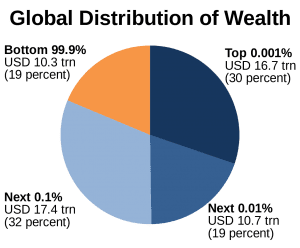
Editor: Vladimir Bajic | Tactical Investor
The Paradox of Negative Interest Rates
Updated February 2024
The concept of negative rates continues to baffle many. It upends the traditional banking model where depositors earn interest on their savings, and borrowers pay interest on their loans. In such an environment, this dynamic is reversed, leading to various unexpected outcomes that can seem like economic illusions.
One of the most direct impacts of negative interest rates is on consumers and businesses. For consumers, the prospect of being charged to keep money in a bank can be a strong incentive to spend or invest rather than save. This is precisely the effect that central banks aim to achieve with negative interest rates – stimulating spending and investment to boost economic activity.
For businesses, negative interest rates can reduce the cost of borrowing, making it cheaper to finance new projects or refinance existing debt. This can lead to increased business investment, which can stimulate economic growth. However, it can also lead to increased risk-taking, as businesses may be tempted to take on more debt than they can handle due to the low borrowing costs.
As of 2024, the world continues grappling with negative interest rate implications. Some economies have seen a boost in consumer spending and business investment, while others have experienced increased risk-taking and financial instability. The long-term effects of this economic experiment remain to be seen. Still, negative interest rates have fundamentally changed how we understand and interact with the financial system.
The Global Dance: A Closer Look at Switzerland and Japan
In finance, such a situation continues to be a fascinating paradox. Several countries, including Switzerland and Japan, have adopted this unconventional monetary policy, which upsets the traditional banking model to stimulate their economies.
In Switzerland, the Swiss National Bank (SNB) has been implementing negative interest rates to prevent the Swiss franc from appreciating too much, which could hurt the country’s export-driven economy. As of June 16, 2022, the SNB raised its reference interest rate from -0.75 per cent to -0.25 per cent, leading several commercial Swiss banks to reduce their negative interest rates or even eliminate them. Despite this, the impact on savers has been significant, with some facing charges for keeping large amounts of money in their accounts.
On the other side of the globe, Japan’s central bank has maintained negative interest rates for over six years. Despite a relatively low inflation rate compared to other industrialized nations, Japan has kept its interest rates below zero to stimulate its economy and fight deflation. However, with the Consumer Price Index (CPI) inflation now at around 3.5%, the highest level in 8 years, there are concerns that the Bank of Japan may be under pressure to address the rising cost of living.
The adoption of negative interest rates by these countries has had mixed results. While it has helped to stimulate spending and investment, it has also led to increased risk-taking and financial instability. Moreover, the long-term effects of this policy are still uncertain, and how these economies will navigate the challenges posed by negative interest rates in the future remains to be seen.
Central Banks: The Puppet Masters of the Financial World
In the grand theatre of global finance, central banks are the puppet masters, pulling the strings of interest rates to choreograph the movements of economies. They wield the power to flip the script, turning traditional banking on its head by setting negative interest rates. This move stimulates economic activity by encouraging lending and discouraging cash hoarding. But like any dramatic plot twist, it can lead to unintended consequences.
Imagine a world where banks, instead of rewarding you for your hard-earned savings, charge you for the privilege of holding your money. It’s like a bizarro world where the robbers are the bankers, and the vaults are empty. This is true in countries where central banks have set negative interest rates.
Banks are in a mad dash to the bottom in this upside-down world, slashing interest rates to attract borrowers. It’s a high-stakes race where the winners are those who can afford to take on debt, and the losers are the savers who are penalized for their prudence. This race to the bottom can squeeze banks’ net interest margins, the difference between the interest income generated by banks and the amount of interest paid out to their lenders. This squeeze can lead to financial instability, making the banking sector more vulnerable to shocks.
But the plot thickens. In their quest to stimulate economic activity, central banks are not just encouraging lending but also discouraging the hoarding of cash. This policy can lead to a surge in spending and investment, boosting economic growth. But it can also fuel a borrowing binge, as businesses, lured by the prospect of cheap credit, may take on more debt than they can handle. This can lead to a buildup of financial risks, setting the stage for a potential debt crisis.
The role of central banks in this financial drama is not without controversy. Critics argue that central banks distort the financial markets and encourage reckless behaviour by setting negative interest rates. They warn that this policy could lead to asset bubbles and exacerbate income inequality, as the wealthy, who have more assets, benefit more from the rise in asset prices.
Ultimately, the story of negative interest rates is a tale of high finance and stakes. It’s a story of central banks playing god with the economy, manipulating interest rates to shape the behaviour of consumers and businesses. But like any story, it’s also a story of unintended consequences and the risks of overreach. And as the curtain falls on this financial drama, one thing is clear: in the world of negative interest rates, the bankers are the robbers, and the savers are the victims.
The Future of Negative Interest Rates
Using interest rates as a policy tool is still relatively new, and its long-term effects are not fully understood. While they can stimulate economic activity in the short term, the potential for unintended consequences means that they should be used with caution. As central banks worldwide continue to grapple with the challenges of low inflation and sluggish economic growth, the debate over the use and effectiveness of negative interest rates is likely to persist.
In conclusion, negative interest rates, consumer behaviour, business investment, central bank policy, and financial market dynamics can create a complex web of economic illusions. Understanding these dynamics can help demystify the paradox of negative interest rates and shed light on their potential economic impacts.
Other Articles of Interest
Capitalizing on the Oil to Gold Ratio: An Ideal Time to Invest in Oil

Trading Chart Patterns Cheat Sheet: Mastering the Key to Success

Abu Bakr al-Baghdadi: The Rise and Fall of the ISIS Leader
Gold bullion bars prices: Trend Projections

The Poor Get Poorer And The Rich Get Richer: Deepening Inequality

The Kurds: Defying Extremism and Paving the Path to Peace in Syria

Volatile Markets: Conquer Market Turbulence and Thrive
Is Religion Dying: Shaping Beliefs with New Discoveries

Exploring the Depths of the Unconscious Mind

Day Late and a Dollar Short: Lessons in Timing and Consequence
Fake Currency: Central banks Print money & buy bullion with it

Food for thought Archives
Is Religion a Scam? Unveiling Truths and Myths

Tech Trends 2023: Cultivating Tomorrow’s Agriculture with Innovation!



